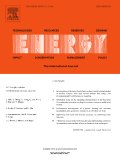Sustainability too big – and important - for simple story
Add Summary
Today’s energy resources and the struggle to meet the world’s needs sustainably is a complicated and compelling story with a full cast of people, the environment, competing needs and shared fates. Telling that tale with balance sheets not only falls flat – but also can reach an entirely different ending.
In this week’s journal Energy, scientists suggest new, more holistic methods to understand the true impact of energy decisions across the globe.
“The questions we face – from what cars we drive to what energy heats our homes – have implications far beyond us,” said Jianguo “Jack” Liu, Rachel Carson Chair in Sustainability at Michigan State University (MSU) and a co-author of 'Energy sustainability under the framework of telecoupling.' “Being able to identify the full impact of those decisions is critical to sustainability and that ability stretches across many scientific disciplines and various geographic regions across the world. The stakes are high and science needs to change to rise to that challenge.”
Liu is director of MSU's Center for Systems Integration and Sustainability.
To keep track of the many moving parts of the energy trade, the authors propose a new way of looking at the world, called telecoupling framework. The telecoupling framework factors in all the interactions – both socioeconomic and environmental – across distance. In Energy, scientists in the United States and China put some real-life examples of energy issues to the test using both traditional “energy trade framework” and using the interdisciplinary telecoupling framework to examine impacts.
An example is solar panels – a fast-growing way to contribute to sustainability by replacing coal-powered electricity across the world. The application of the telecoupling framework reveals a less simple analysis by factoring in the complexities of China’s manufacture boom of photovoltaic panels to sell to customers in the European Union. What began as a clear win both for manufactures and the environment collapsed under a series of complicated feedbacks – one of the telecoupling framework’s specialties to scrutinize.
For while solar panels shows success in reducing coal consumption, it also required manufactures to use electricity to produce the panels, which caused greenhouse gases to be emitted and spurred manufacturers to seek cheap (and less environmentally friendly) fuel sources to maintain profits. The European Union took exception to that, resulting ultimately in China being taxed on solar panels. China’s price advantage was lost, and the industry collapsed.
“Any activities are driven by energy,” said co-author Canbing Li from China's Hunan University. “Only from socioeconomic or environmental aspects, it is impossible to get deep insight into how energy system works and the telecoupling framework provides a chance to mitigate the gap.”
The telecoupling framework, authors submit, also can do a better job of understanding long-term reactions to events.
For the 2011 earthquake and tsunami in northeastern Japan, which damaged the Fukushima nuclear power plant and caused leakage of radiation, a traditional short-term analysis would witness only the fear and panic the accident caused. That would point to a widespread rejection of nuclear energy and a subsequent increase in non-renewable fuels. Sustainability in this scenario, the paper shows, takes a hit.
But viewing the incident from more vantage points allows for the industry’s increased attention to safety, greater communication about nuclear power a more measured analysis of increased costs to alternative power sources.
“Under the framework of telecoupling, both socioeconomic and environmental impacts are simultaneously taken into consideration,” the paper says. “The decline of nuclear power generation in the short term and redevelopment of nuclear power plants with enhanced security level in the long term. Therefore, the conclusions are more comprehensive and practical.”
In addition to Liu and Li, the paper was written by Baling Fang, Yi Tan, Yijia Cao, Pia-Johanna Schweizer, Haiqing Shi, Bin Zhou, Hao Chen and Zhuangli Hu.
The research was supported by the National Natural Science Fund of China, Hunan Strategic Industries Scientiï¬c and Technological Projects, U.S. National Science Foundation and Michigan AgBioResearch.



 Print
Print Email
Email

